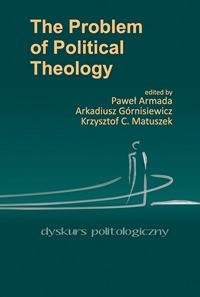Jesteś tutaj: prof. Jacek Bartyzel » Miscellanea » The Social Kingdom of Christ in the Catholic Theology of Politics (On Pope Pius XI’s Encyclical «Quas primas»)
The Social Kingdom of Christ in the Catholic Theology of Politics (On Pope Pius XI’s Encyclical «Quas primas»)
Jacek Bartyzel

The idea of the Social Kingdom of Christ has permeated the teaching of the Catholic Church at all stages of the Church’s earthly pilgrimage since the moment of its establishment by the Divine Founder. The doctrinal culmination of pontifical teaching concerning this Kingdom was Pope Pius XI’s encyclical “On the Kingship of Christ” entitled Quas primas1, promulgated on December 11, 1925. Its liturgical expression was the simultaneous institution of the Feast of Christ the King.
The Pope begins the exposition of teachings regarding Christ’s kingship by explaining the sense and range of the various meanings of the attribute of kingship. First (in chronological order, given the antiquity of the usage of this attribute) is the metaphorical meaning: Christ is the King in the colloquial sense, due to his highest level of majesty, superior (and obviously prior) to all creations. Consequently Christ reigns, and should reign, in the human minds (as he is the Truth, of which people should avail themselves), in human will (as only in the hypostatic unification of both of his natures the impeccable human will fully obeys the will of God) and in human hearts (as the love superior to everything and attracting the souls). In another, actually deeper meaning, Christ is the King as man, who may be said to have received from the Father power and glory and a kingdom (Dn 7:13-14), as the one who, being “consubstantial with the Father, has all things in common with him, and therefore has necessarily supreme and absolute dominion over all things created” [Qp, 72].

The above exposition is then supplemented with historico-exegetical argumentation from the Holy Scriptures. Pius XI presents here a concise overview of numerous prophecies of the Old Testament related to the reign and to the Kingdom of the Christ, including the prefiguration of the future genuine King over Zion and the King of Israel in the Book of Numbers (24:19) and in the Psalms (Pss 44 and 71) and in the prophecies of Isaiah (Is 9:6-7), Jeremiah (Jer 23:5), Daniel (Dn 2:44 and 7:14-15), Zechariah (Zec 9:9). Then he applies the same in relation to the New Testament, referencing the Gospel according to Luke (Lk 1:32-33), Matthew (Mt 25:31-40 and 28:18) and John (Jn 18:37), as well as the Apocalypse (Apoc. 19:16) and Epistle to the Hebrews (Heb 1:1) and the First Epistle of Paul to the Corinthians (1 Cor 15:25). The royal title of Christ (Kyrios, Basileus) appearing very frequently in the books of the New Testament was given a doctrinal shape (mentioned by Pius XI shortly beforehand) with the definition of the dogma of unity of the Son and the Father by the First Council of Nicaea in 325, when the Council “added to the Creed the words of whose kingdom there shall be no end, thereby affirming the kingly dignity of Christ” [Qp, 5]. This part is concluded with the reminder of the conscience of the kingship of Christ in the liturgy of the Church continuing without interruption since the ancient liturgical books, yet it is worth to emphasize, noted by the Holy Father, “the perfect harmony of the Eastern liturgies with our own in this continual praise of Christ the King” [Qp, 12]. In this way, the pope indicates the basis of the genuine ecumenism, i.e. the maintenance of the accord between lex orandi and lex credendi.
Całość w: The Problem of Political Theology, ed. by P. Armada, A. Górnisiewicz, K.C. Matuszek, Akademia Ignatianum, Wydawnictwo WAM, Kraków 2012, s. 59-76.
1 From this point on abbreviated: Qp.
2 Numbers referencing paragraphs in the English official translation available at: http://www.vatican.va/holy_father/pius_xi/encyclicals/documents/hf_p-xi_enc_11121925_quas-primas_en.html.

